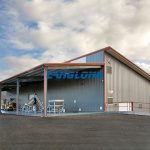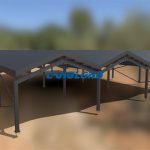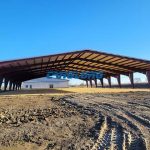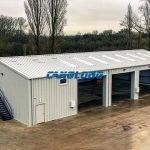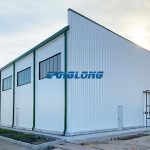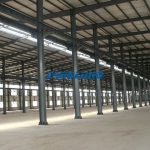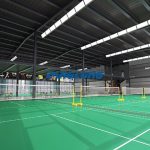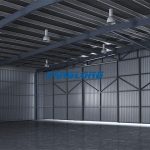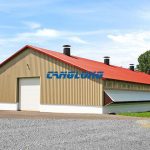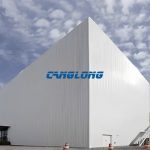Prefabricated steel structures are changing building design
With the advancement of science and technology and the continuous development of the construction industry, prefabricated steel structure, as a new type of building materials and construction methods, are gradually entering our field of vision. It not only brought innovation in construction technology, but also triggered profound changes in the field of architectural design. This article will explore the concept, characteristics, and application cases of prefabricated steel structures, as well as how it changes architectural design and the changes it brings. It will also analyze the advantages and challenges of prefabricated steel structures in building design, and look forward to its future development trends.
Concepts and characteristics of prefabricated steel structures
Prefabricated steel structure refers to a construction method in which steel materials are pre-processed into various components in a factory according to design requirements, and then transported to the construction site for assembly. This construction method has many significant features, such as short construction period, high precision, good structural stability, and environmental protection. Specifically, prefabricated steel structures can greatly shorten the construction period, improve construction efficiency, and reduce the consumption of manpower and material resources. At the same time, because it is precisely processed in the factory, the quality and precision of the components are ensured, thereby improving the stability and reliability of the entire building. In addition, the prefabricated steel structure is also produced using recyclable materials, which reduces the generation of construction waste and waste and is in line with the concept of green environmental protection.
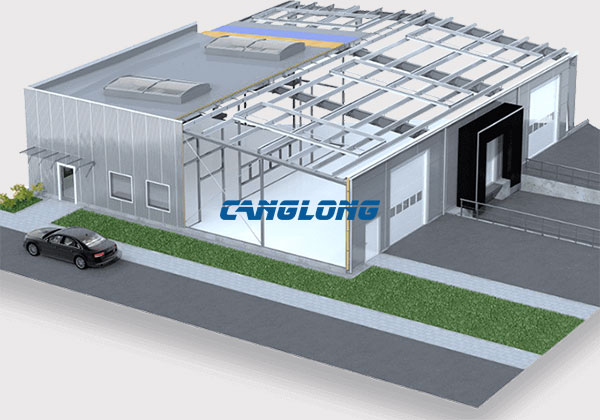
Application cases of prefabricated steel structures in building design
Prefabricated steel structures have been widely used in various construction projects, including factories, large shopping malls, office buildings, sports venues, etc. For example, a large sports venue uses prefabricated steel structure as the main structure, which not only achieves rapid construction but also ensures the safety and stability of the building. At the same time, the prefabricated steel structure also makes the layout of the internal space of the building more flexible and changeable, meeting the needs of different functions.
How prefabricated steel structures are changing architectural design and the changes they will bring
The application of prefabricated steel structure make architectural design more flexible and diverse. Because the components can be pre-processed in the factory, designers can be more creative and realize various complex architectural forms and spatial designs. At the same time, the application of prefabricated steel structures also promotes the integration of architectural design and construction, making design concepts and construction practices more closely integrated. In addition, prefabricated steel structure also promote the sustainable development of the construction industry, promote resource conservation and environmental protection.
Advantages and challenges of prefabricated steel structures in building
The advantages of prefabricated steel structures in building design are mainly reflected in short construction period, high precision, good structural stability, and environmental protection. However, prefabricated steel structure also face some challenges, such as difficult design, high construction requirements, and high costs. Therefore, when promoting and applying prefabricated steel structures, it is necessary to fully consider its advantages and disadvantages and take corresponding measures to solve them.
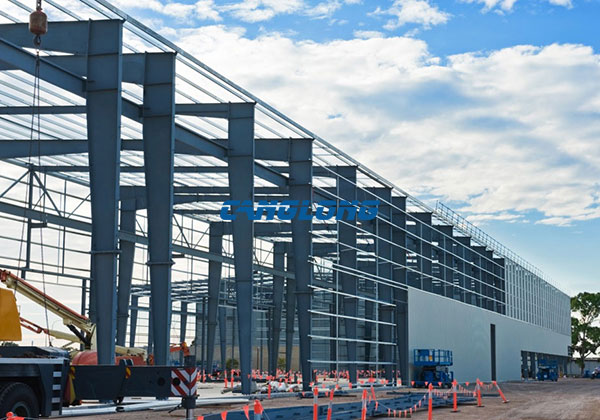
The future development trend of prefabricated steel structures in building
In the future, prefabricated steel structures will continue to play an important role in the construction field. With the continuous advancement of science and technology and the continuous development of the construction industry, prefabricated steel structure will achieve more intelligent, green and efficient production. At the same time, the application scope of prefabricated steel structures will also be further expanded to include more types of construction projects and fields. It is believed that in the near future, prefabricated steel structure will become one of the mainstream trends in the construction field.
